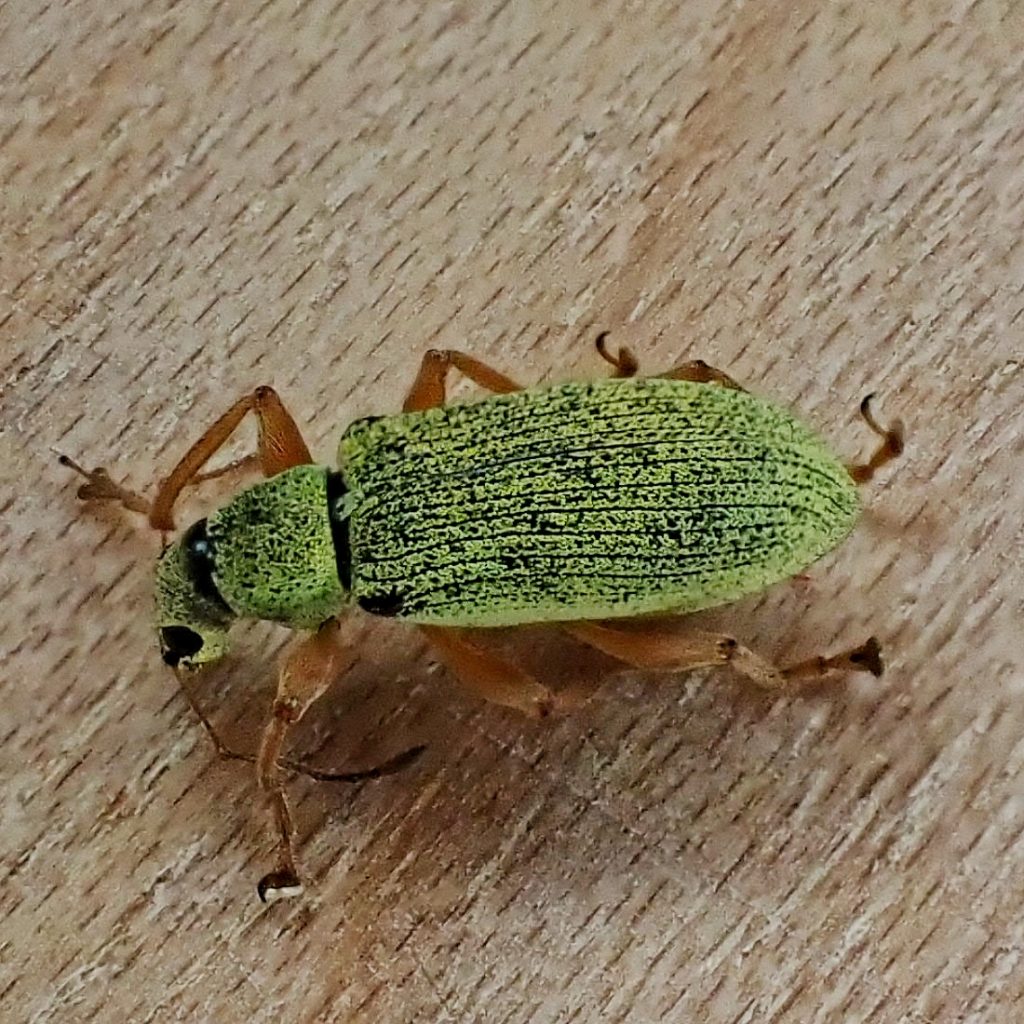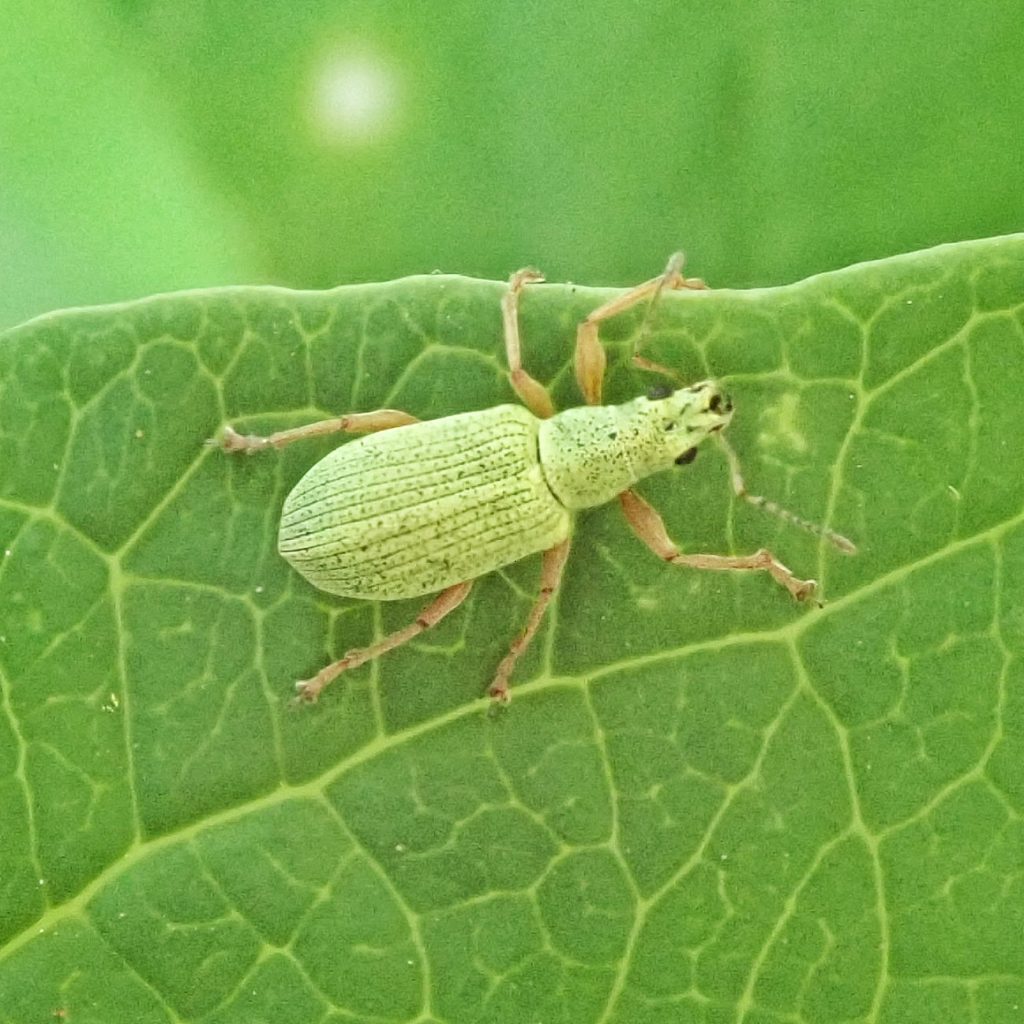
The first time I saw one of these Pale Green Weevils I managed to get a photo, but couldn’t collect it. I made a halfhearted attempt to identify it, and thought it might be Polydrusus impressifrons, but I assumed that, without a specimen to examine, it would be impossible to positively identify. But, it turns out I was wrong. All you really need to do is see it well enough to determine the ratio between elytral length and pronotal length (at least 4:1 in this species) and to see the notch in the snout that differentiates this species from P. sericeus.
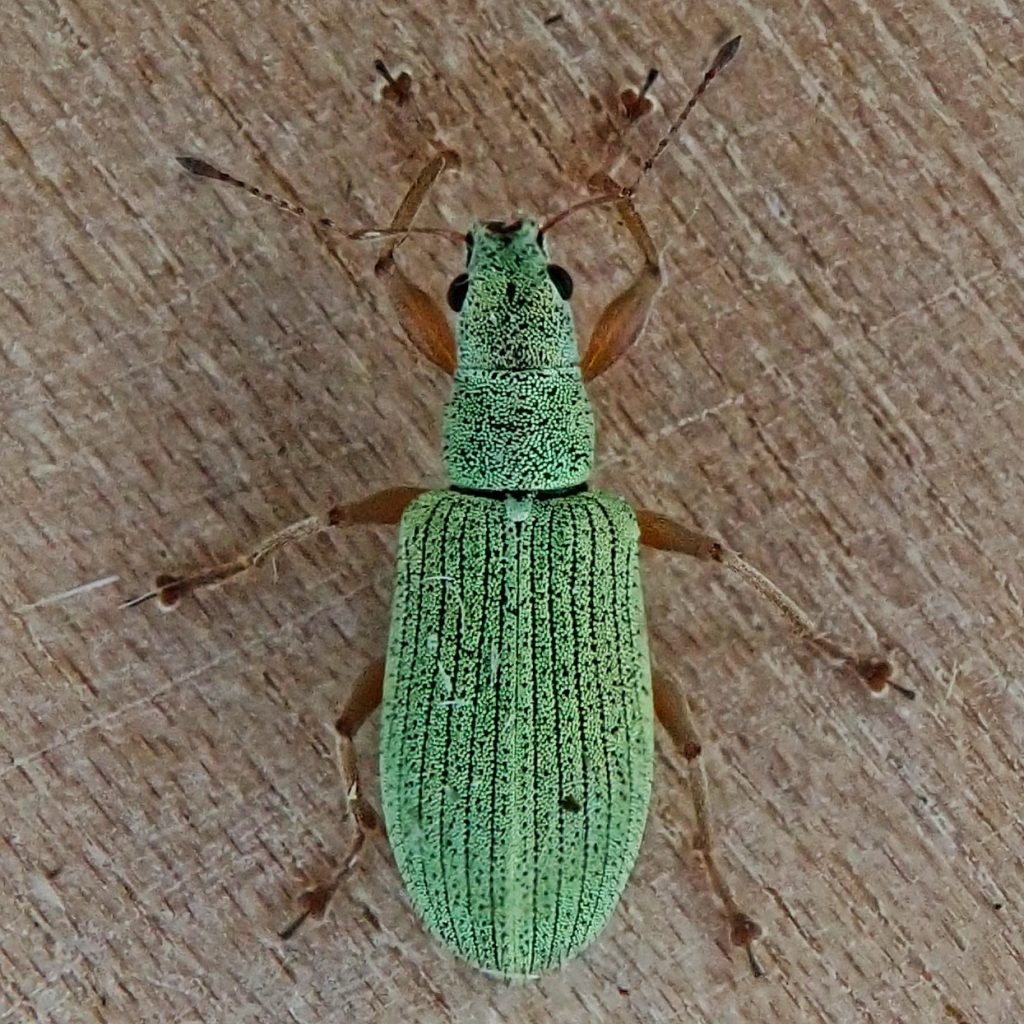
This is an introduced species which was first found in New York in 1906. It has spread across much of North America, and may have also been introduced into the PNW. It is considered a pest species, but only causes serious damage (usually in apple or pear orchards, and sometimes to strawberries) when its numbers are large, or when the trees are still saplings.
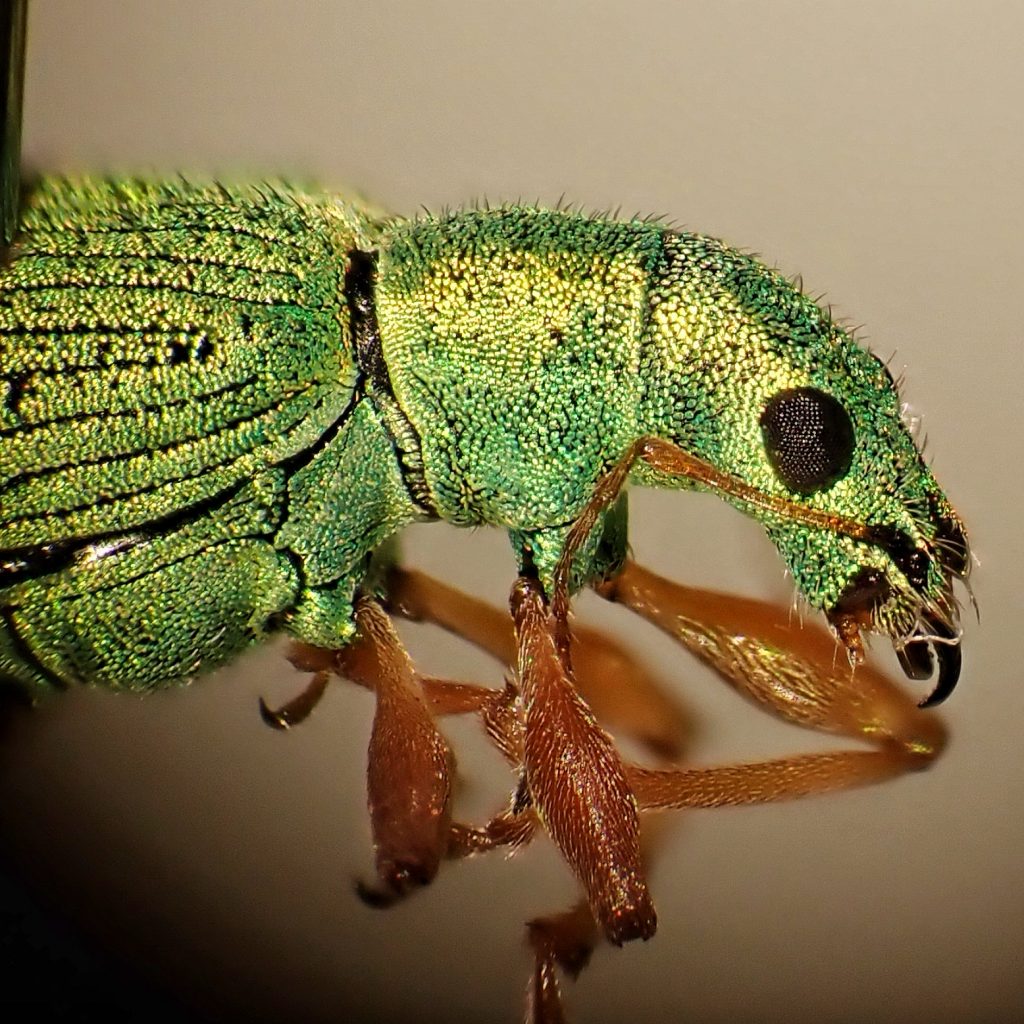
The beauty of this weevil is not particularly noticeable to the naked eye, but they are rather spectacular under high magnification! I found over a dozen of them last weekend in a short trip to the Vancouver Lake area, so I collected a couple for identification. With good lighting under the ‘scope they are transformed into jewels! And I would guess that they are almost as impressive and aesthetically satisfying in sunlight with a good handlens.
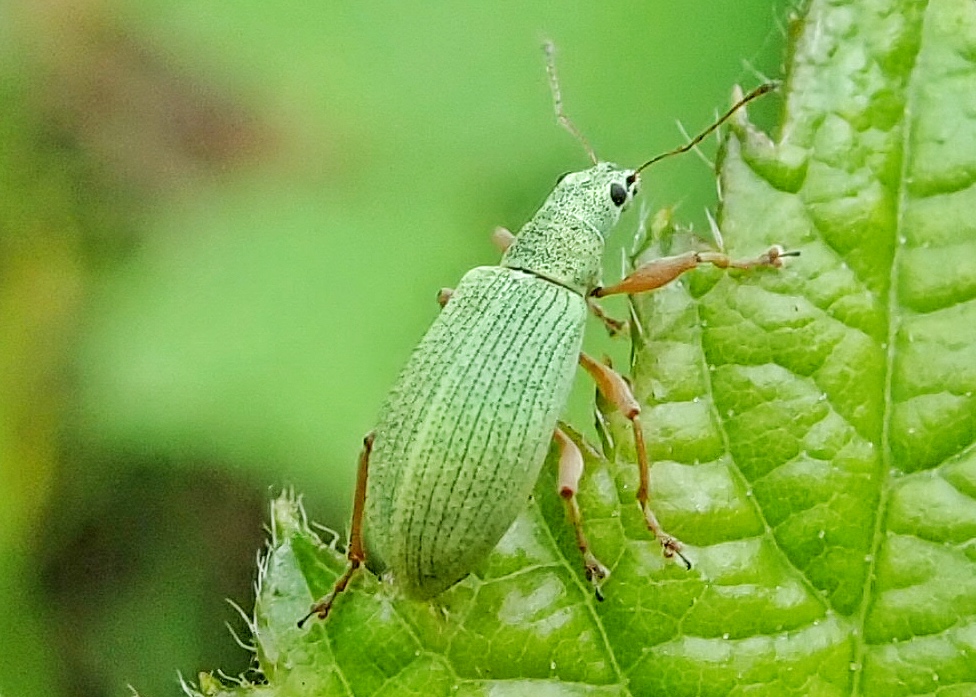
Description– Small (4-5mm), very green weevil with black speckling and a long snout; snout has a visible notch when viewed from above; elytra at least 4x as long as the pronotum; legs and antenna reddish brown.
Similar species–Polydrusus sericeus lacks notch in the snout; other Polydrusus spp. have elytra much less than 4x as long as the pronotum; Pachyrhinus elegans has darker legs and antenna, shorter snout, and lacks black speckling amidst the green.
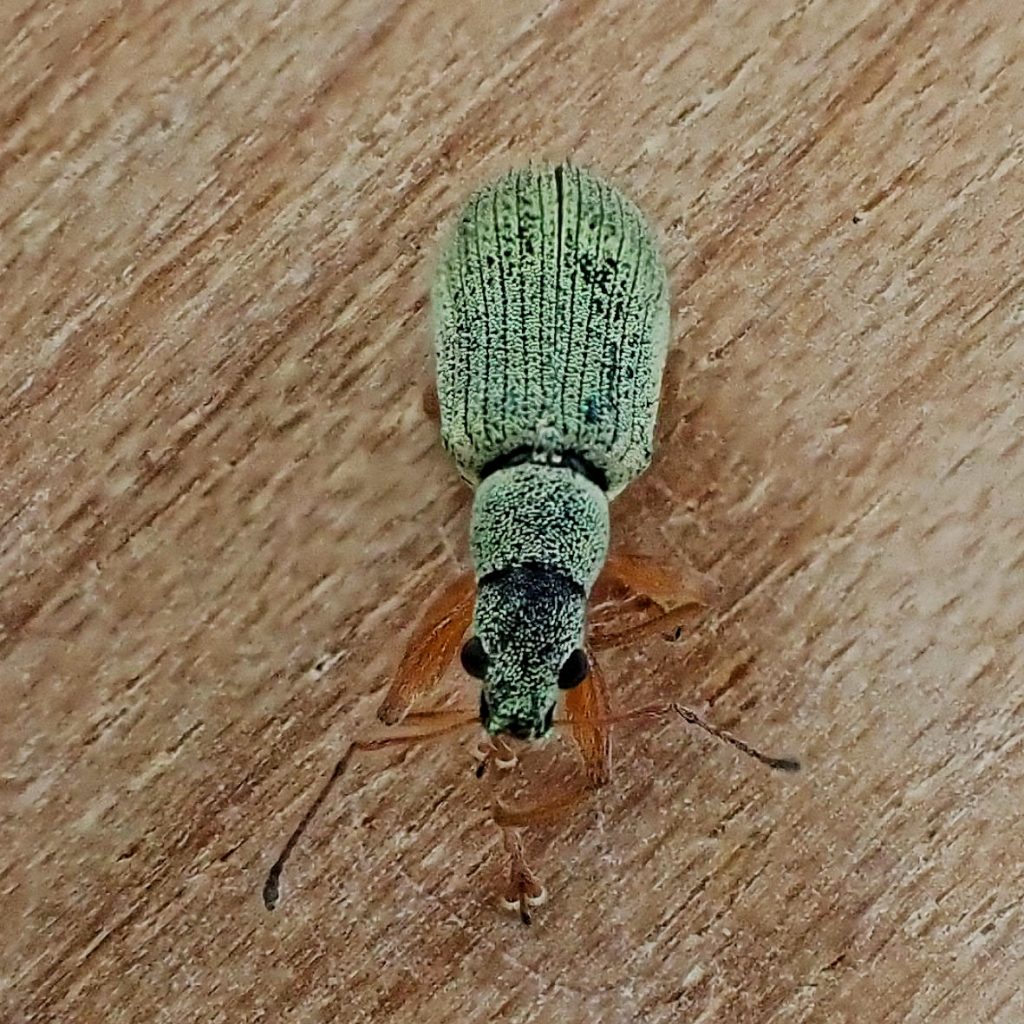
Habitat– Damp to mesic forests and woodlands, and riparian corridors; becoming more common in urban and suburban areas.
Range-European native; established in the Northeast and PNW in North America; possibly region wide in appropriate habitat.
Eats-Larvae feed on the roots, and adults eat the leaves, of a variety of trees in the genera Populus, Salix, Alnus, Betula, Malus, Pyrus, and many others.
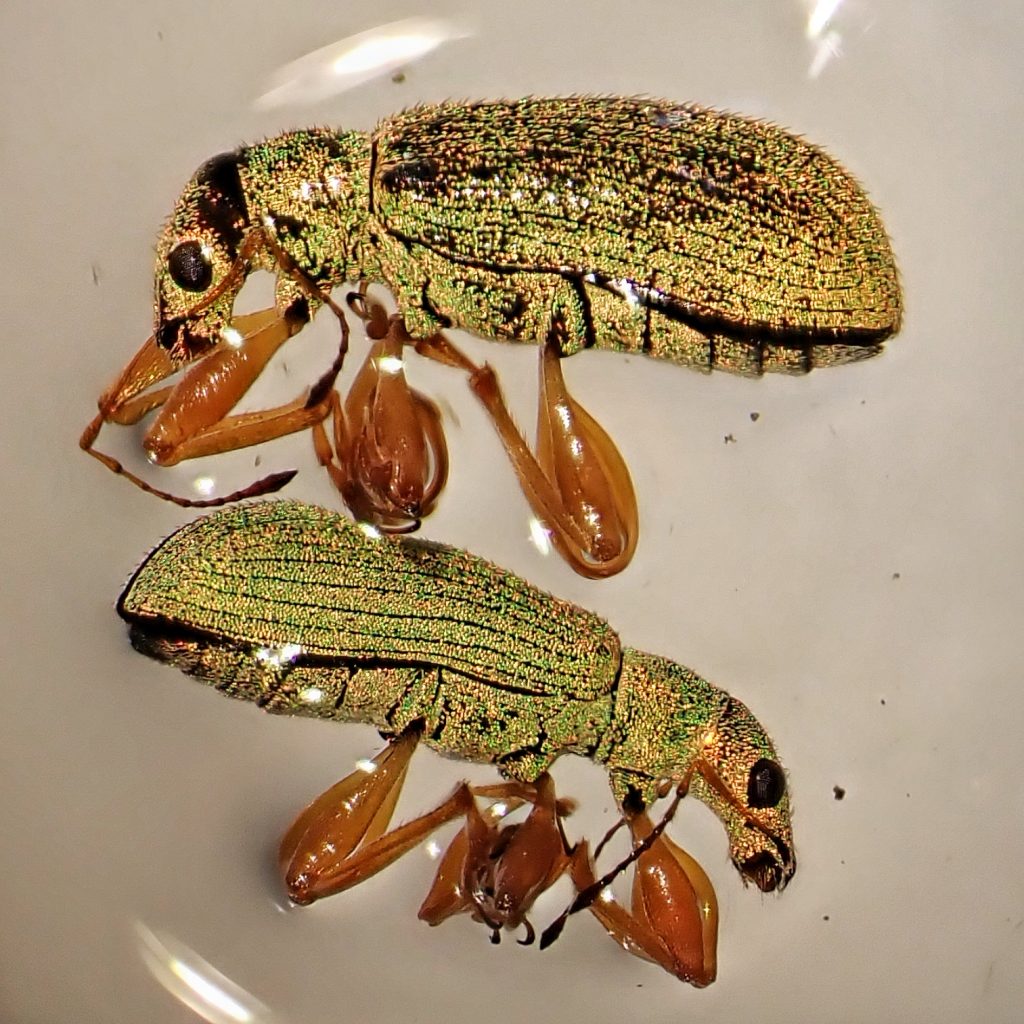
Reproduction-Eggs are laid in holes and crevices of the host plant in early spring; larvae drop to the ground and feed on the peripheral roots of the host plant; larvae overwinter in hibernation and pupate in early spring.
Adults active-April to July
Etymology of names– Polydrusus is possibly from the Latin for ‘many stakes’, but I can’t confirm that, and I have no idea to what that may refer. The specific epithet impressifrons is from Latin and translates roughly as ‘impressed face’, and refers to the front of the snout being notched.
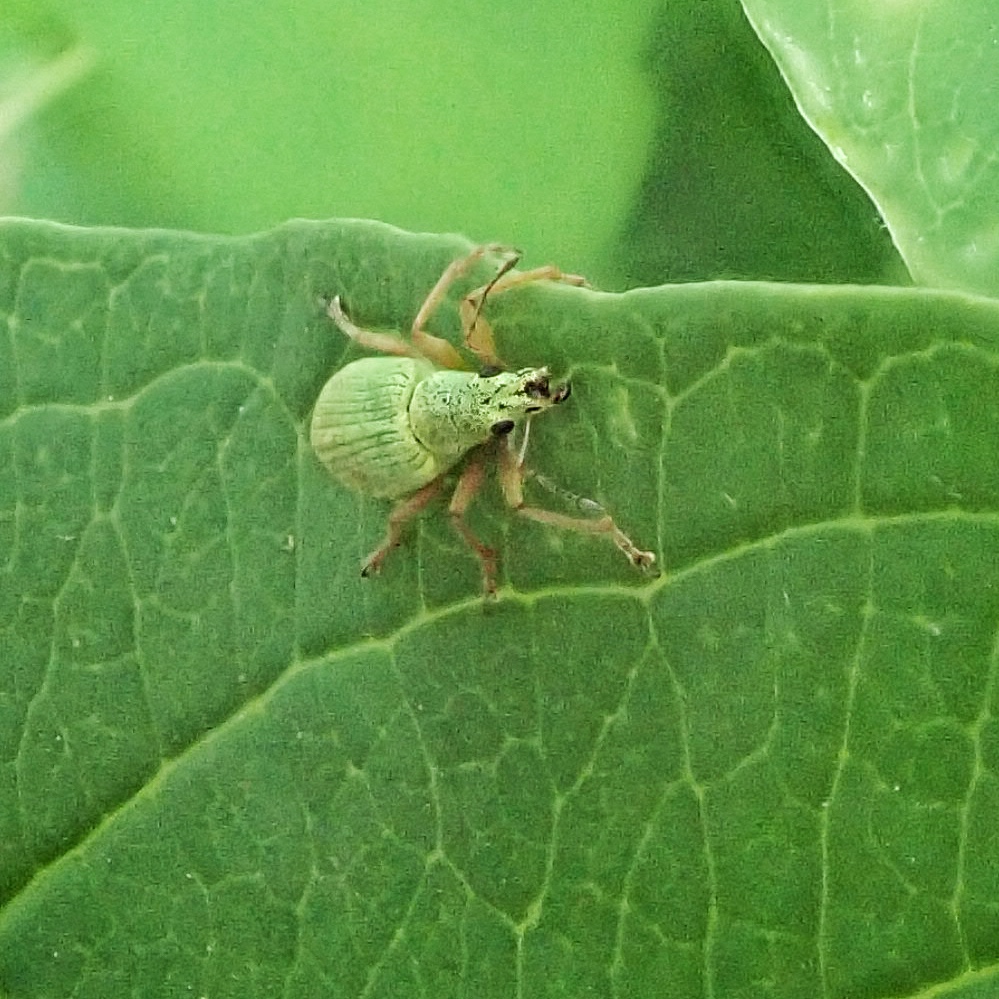
http://oregonstate.edu/dept/nurspest/Polydrusus_weevil.htm
https://bugguide.net/node/view/119188
https://kb.osu.edu/bitstream/handle/1811/4435/V57N03_129.pdf?sequence=1
https://esa.confex.com/esa/2012/webprogram/Paper68335.html
https://www.insectidentification.org/insect-description.php?identification=Pale-Green-Weevil
